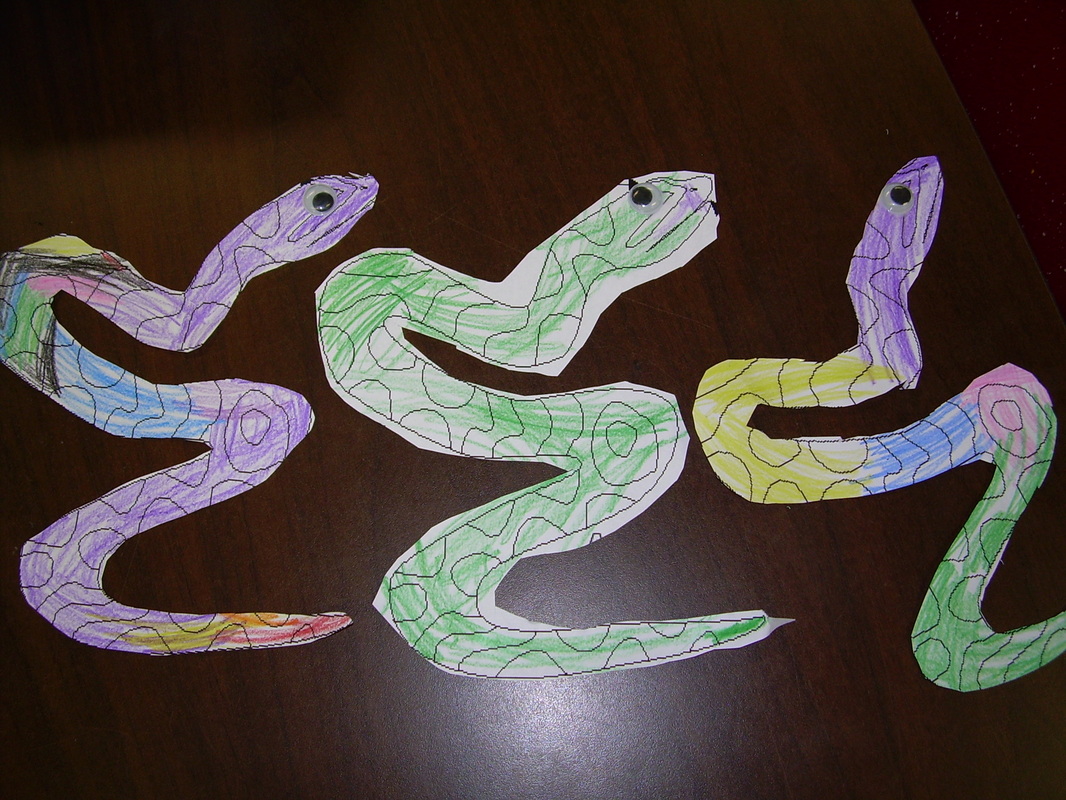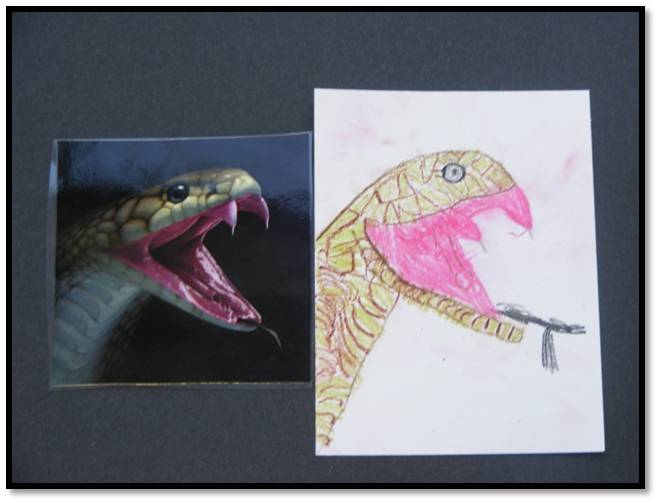As teachers, we automatically want what is best for children. This means we want children and students to know their colors, ABC's, number identification because we know the importance of this knowledge for their future learning. Along with academics, we as teachers want to make sure the whole child is developing "as they should", meaning their social/emotional development, physical development, and cognitive development. As a former preschool and infant/toddler teacher, I know first hand how important it is for children to be able to express their thoughts, ideas and feelings to an adult or another child. This is a skill that impacts how children relate to others or handle new situations. With this being said, for the first few years children have a hard time coming up with words to express these emotions and tend to develop motor skills like walking, running, or using large movements first. Young children are typically attracted to the arts; the bold colors, lines, abstract pieces and still pieces. Most children learn through physical touch so messy mediums such as paint or clay are innately attractive to children, most children.
I find that the arts are a form of stress relief in my life. I may not be good at painting or drawing but when I sit down at an easel and paint, I feel a calming sensation. Many children are the same way. Art is a form of expression that many start investigating at an early age, if presented. Young children will typically paint what is on their mind, using colors or strokes to resemble the way they are feeling. I have have encountered many situations of children feeling frustrated. One calming technique I use is to have children draw to express their feelings of frustration. Many children will usually draw sad or angry faces, some will use big wide strokes covering the whole page and others might draw "beautiful" pictures to help them cope with the situation. Either way, I try to provide them with an outlet of expressing their feelings in a productive way.
Knowing that art can be an expression of one's self, I have a hard time understanding how it has moved to an adult directed subject. Art just like anything else does require a teacher or adult to help model and introduce tools or techniques that can be used to obtain a student's goal, however what I see in preschools all around are coloring sheets replacing open ended art. I see teachers telling children what an end product should look like using their own model as a reference which can be frustrating and annoying for a young child who has not yet developed the fine motor skills that you as an adult have. When we provide children with predrawn items, we are asking them to remove their ideas of what this particular item looks like leaving little room for dialogue and deep thinking. When we ask children to draw their own ideas, using a real life picture if they suggest, then we can talk about the shape, the parts they see, the colors and texture of that object. We as a group or partnership investigate the topic at hand so children develop an understanding and relationship with the subject. Sometimes our classrooms will provide a real picture of the object, for example a snake. Providing a real picture is different from a cartoon coloring sheet in that it is predrawn by a human depicting that person's ideas on how all snakes should look. When using real pictures you as a teacher are providng the students with materials that are found in their world/environment and using it as an investigative tool rather than a model. Using a real picture of an item or what can be termed "provocation", still leaves the interpretation of the object in the child's hands rather than just leaving them with one option: color. When my 5 year old preschoolers sat down to work on the snake below, I as the teacher modeled research like questions: "What do you think the snake feels like? What would make his skin feel that way? What do you see in his mouth? Why would he have those in his mouth?". They picked out attributes that I myself did not think of which helped me develop a deeper understanding of snakes.
Bottom line to me is the idea of having a child color the picture provided or create a representation of what they think the object looks like, feels like, etc.
Photo 1 Photo 2
I find that the arts are a form of stress relief in my life. I may not be good at painting or drawing but when I sit down at an easel and paint, I feel a calming sensation. Many children are the same way. Art is a form of expression that many start investigating at an early age, if presented. Young children will typically paint what is on their mind, using colors or strokes to resemble the way they are feeling. I have have encountered many situations of children feeling frustrated. One calming technique I use is to have children draw to express their feelings of frustration. Many children will usually draw sad or angry faces, some will use big wide strokes covering the whole page and others might draw "beautiful" pictures to help them cope with the situation. Either way, I try to provide them with an outlet of expressing their feelings in a productive way.
Knowing that art can be an expression of one's self, I have a hard time understanding how it has moved to an adult directed subject. Art just like anything else does require a teacher or adult to help model and introduce tools or techniques that can be used to obtain a student's goal, however what I see in preschools all around are coloring sheets replacing open ended art. I see teachers telling children what an end product should look like using their own model as a reference which can be frustrating and annoying for a young child who has not yet developed the fine motor skills that you as an adult have. When we provide children with predrawn items, we are asking them to remove their ideas of what this particular item looks like leaving little room for dialogue and deep thinking. When we ask children to draw their own ideas, using a real life picture if they suggest, then we can talk about the shape, the parts they see, the colors and texture of that object. We as a group or partnership investigate the topic at hand so children develop an understanding and relationship with the subject. Sometimes our classrooms will provide a real picture of the object, for example a snake. Providing a real picture is different from a cartoon coloring sheet in that it is predrawn by a human depicting that person's ideas on how all snakes should look. When using real pictures you as a teacher are providng the students with materials that are found in their world/environment and using it as an investigative tool rather than a model. Using a real picture of an item or what can be termed "provocation", still leaves the interpretation of the object in the child's hands rather than just leaving them with one option: color. When my 5 year old preschoolers sat down to work on the snake below, I as the teacher modeled research like questions: "What do you think the snake feels like? What would make his skin feel that way? What do you see in his mouth? Why would he have those in his mouth?". They picked out attributes that I myself did not think of which helped me develop a deeper understanding of snakes.
Bottom line to me is the idea of having a child color the picture provided or create a representation of what they think the object looks like, feels like, etc.
Photo 1 Photo 2
Think about the experiences each child has had, the pleasure, and fulfillment. Think about what they have gained and their impression of art, along with the ability to express themselves artistically. Please watch this TED talk about the creativity in education.
*The picture to the right was drawn by a five year old little girl in my preschool classroom. This was a small group exprience in which I was there to facilitate questions and information gathering.
*The picture to the right was drawn by a five year old little girl in my preschool classroom. This was a small group exprience in which I was there to facilitate questions and information gathering.


 RSS Feed
RSS Feed